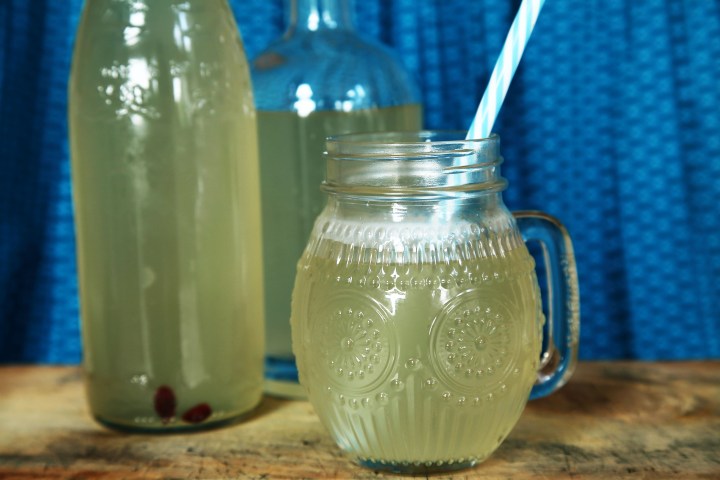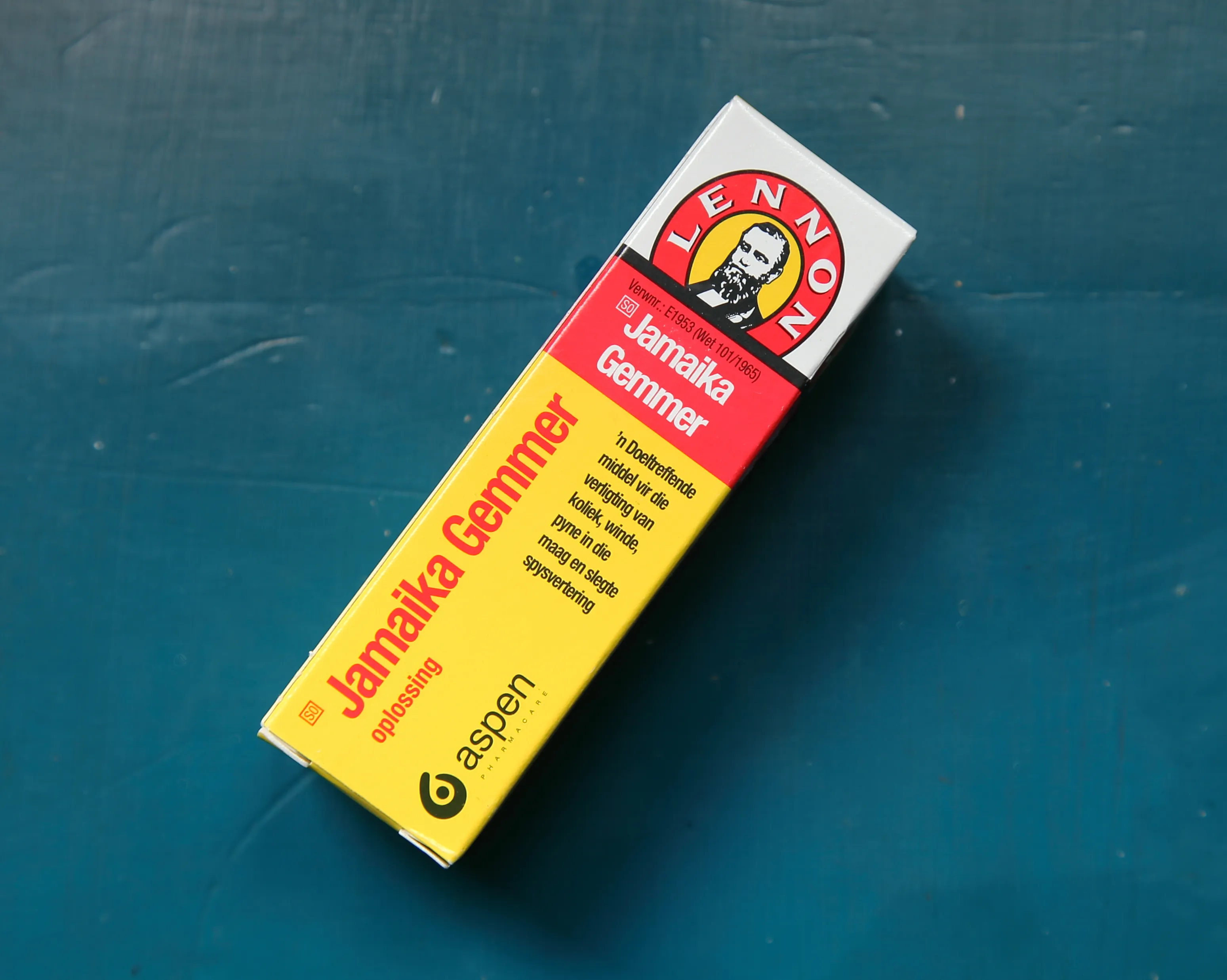SCOFF
Plague waters and isiphephetho

While many of South Africa’s lockdown ginger beer makers were aiming for intoxication, some may have been seeking support and protection in an abstract, spiritual sense.
Many of those lucky enough to have been comfortable but bored (rather than destitute and hungry) during the Covid-19 lockdown levels 5 and 4 sought projects to pass the time. Like countless other South Africans, I spent hours, days and ultimately weeks making ginger beer. In so doing, I suspect I was part of an intuitive medico-mystical tradition stretching across space and time.
Ginger is a pandemic perennial which has repeatedly been put forward as a putative preventative/cure in many different infectious disease crises within multiple medical, spiritual and culinary modalities. Almost all ancient therapeutic traditions (from Ayurvedic Indian to Zulu herbalist and beyond) recommend ginger as part of a healing process in which disease is the result of disrupted biological and spiritual equilibrium and health comes from balance restored.
In troubled times prices almost invariably rise with increased demand. David Michael D’Andrea’s remarkable book Civic Christianity in Renaissance Italy delineates healing attempts which took place during the Venetian bubonic plague outbreak in 1485. At the start of the epidemic in March 1485 records from the Treviso hospital show that a cart load of ginger to make plague waters, poultices and to purify the air was purchased for 12 Soldi. Lest there be any confusion, the term “plague water” was used to describe purportedly curative herbal infusions that were being made and sold well into the 18th century. By September 1485 demand for ginger was such that the same delivery cost 2 Lire. Since there were 20 Soldi to a Lira this reflects a 233% increase in six months.
The more things change the more they stay the same. Different plague. Same proposed panacea. Since Covid-19 reared its ugly head in late 2019 the world has been awash with claims of ginger containing cures. The desire for ginger rose just as the Chinese output was radically reduced and the economics of supply and demand kicked in. Prices obtained from Johannesburg Fresh Produce Market records show that in April 2020 the RSA price of root ginger rose by 24%. Stats SA and the Pietermaritzburg Economic Justice and Dignity Group have both published data showing that in the same period vegetable prices declined by 4.6%.
In response to the recent social media sound and fury, Michael Ryan, executive director of the World Health Organisation (WHO) Emergencies programme, issued a statement reminding us all that “while natural remedies such as ginger can have a positive impact on your health, they are by no means a medically proven treatment for fighting Covid-19”. And yet so many of us went on buying it.
Most of the ginger that South Africans purchased in this period went into homemade ginger beer. A desire to bypass Level 4 and 5 lockdown liquor prohibition was the ostensible reason for much of the DIY gemmer bier production but I suspect something else was also going on.
Maybe I am just really bad at making ginger beer, and everyone else spent lockdown drunk as a skunk, but my experience has been that making a decently alcoholic ginger beer is quite difficult. If it was only about intoxication, almost all the people mixing ginger, sugar, water, yeast, lemon juice, tartaric acid and a few raisins would have given up. Alcoholic ginger beer requires patience, sterile conditions, a working knowledge of anaerobic fermentation and the capacity to create an effective airlock. At the start of lockdown, the powers that be removed brewer’s yeast from supermarket shelves so almost everyone was working with bread making yeast which, even in ideal conditions, expires as its environment approaches 8% alcohol. With the exception of the poor misguided souls who poisoned themselves by adding pure pharmaceutical alcohol to their homebrew, it seems likely that much of what has been made in recent weeks was either low or no alcohol.
I tried a range of recipes. My first few batches used ginger spice powder and followed instructions provided by Chef Xoliswa Ndoyiya who got them from her aunt Nobanda who “sold it in the ’70s for 12 cents a bottle and was famous for her gemmer in Ezibeleni, Queenstown”. Aunt Nobanda was a teetotaller so she only fermented her beverage overnight. I had time on my hands to muse about my underlying motivations because my version ultimately took 10 days to become passably potent.
It was Sis Xoli who first mentioned healing powers. While she was unsure of the details, my friend and fellow ginger beer enthusiast Coceka Mdludlu confirmed that, “Where I grew up in Mount Frere there was always homemade, non-alcoholic ginger beer made with the spice powder. We never used fresh, only the powder. Of course, it tastes nice but it was about more than that. It was used as a tonic to lessen anxiety levels. This was especially prevalent amongst spiritually gifted Xhosa people.
“There is something called uvalo which is basically a kind of stressed feeling without an accompanying stressful event. Just a sense of foreboding or unease that seemingly comes out of nowhere. This can be seen as negative energy or evil spirits roaming around the sufferer. It is a very common sensation amongst the spiritually gifted and it tends to occur when their connection is not in sync with that of their guides. When the guides arrive, the initiate feels anxious due to failure of identifying the visitation.
“Anyone who suffers from uvalo is given ginger to drink. If a student is anxious or depressed before exams there will be a belief that some spirits do not want that child to succeed and ginger will be recommended.

Jamaika Ginger. (Photo: Anna Trapido)
When the stress is particularly strong Jamaika Ginger, the medicine, will be used. It is also recommended with newborns as a support to help heal the umbilical wound… Newborns are believed to be susceptible to opportunistic spirits and the Jamaika Ginger medicine will speed up the healing (called ukukhupha umoya) and allow for spiritual and earthly protection.”
A conversation with Chef Lientjie Wessels further blurred the boundaries between “huisapotheek” Afrikaans folk medicine and the social/culinary spaces when she gave me her mother’s gemmer bier recipe which uses Jamaika Gemmer as a flavourant in place of spice powder or fresh root. And very delicious it was too. Especially when I made it using my new best friend the Ginger Beer Plant. Some people became parents to a sourdough starter, my lockdown culture creation was a Ginger Beer Plant. Like I said, I had time on my hands…

Some people became parents to a sourdough starter, my lockdown culture creation was this Ginger Beer ‘Plant’. (Photo: Anna Trapido)
My next batch used fresh ginger root and (while carbon dioxide gently bubbled through the Heath Robinson airlock that I had rigged up) I began to wonder whether South African traditional healers had additional insights into the current craving. Up until this point I was working exclusively with fresh or dry Zingiber officinale which is the rhizome probably of Southeast Asian origin commonly sold in supermarkets and spice shops. Siphonochilus aethiopicus belongs to the same family as Zingiber officinale but is indigenous to South Africa where it is known as isiphephetho in isiZulu and serokolo in Setswana. It is sold dried and fresh by local traditional healers for medicinal and spiritual purposes. It is cultivated in small quantities commercially but such is the demand for isiphephetho that it is now virtually extinct in the wild.
I telephoned traditional healer Keagile Malatji who pointed out that “like the Asian ginger, our wild ginger has always been used medicinally to treat colds, flu and asthma. It can be used fresh or dry. It can be sliced fine and put into boiling water to be drunk as an infusion or it can be chewed fresh. It is sometimes fermented. Either way it acts as a protecting, cleansing force. This extends beyond the purely medical into the spiritual and emotional sphere where it protects against hysteria and also, some say, snakes and lightning strikes.
“If a person has to go into or has come from a toxic space they can take a little ginger to protect against negative energy. I would especially recommend this for those who have small children. Babies are particularly vulnerable to negative energy vibrations so it is important to cleanse prior to coming into contact with them. It is also helpful for people moving between life stages; for example, I recommend that brides sprinkle it around their wedding venues to keep negative forces at bay. It acts as a protective barrier in situations where a person feels isolated and needs the support of ancestors.”
All of the above tallies with Coceka’s observations and it seems likely that the purpose and perceived powers of the two plants overlap in certain parts of South Africa.
Prohibition has come and gone but I am still brewing ginger beer. I have had much more success creating properly boozy batches since we transitioned to lockdown Level 3 when I could order specialist champagne yeast (which has strong fermentation characteristics and high alcohol tolerance) online. While it is essential to emphasise that there is no direct curative connection, it is also important to engage with the possibility that at least some of the South African lockdown ginger beer makers may have been seeking support and protection in a more abstract and spiritual sense. Cynics will dismiss all of the above and argue that South Africans just wanted to get drunk. I choose to believe otherwise.
Human motivations for the most mundane of daily deeds are often complex and confusing. Layers of culture, history, biology, instinct and intuition are embedded into our actions and loaded with symbolic meaning. Ginger can no more kill Covid-19 than it did the bubonic plague but it can call up spiritual support and calm our collective consciousness in a crisis for which we currently have no cure. Plus, it tastes great. For now, that is as good as it gets. DM/TGIFood




 Become an Insider
Become an Insider